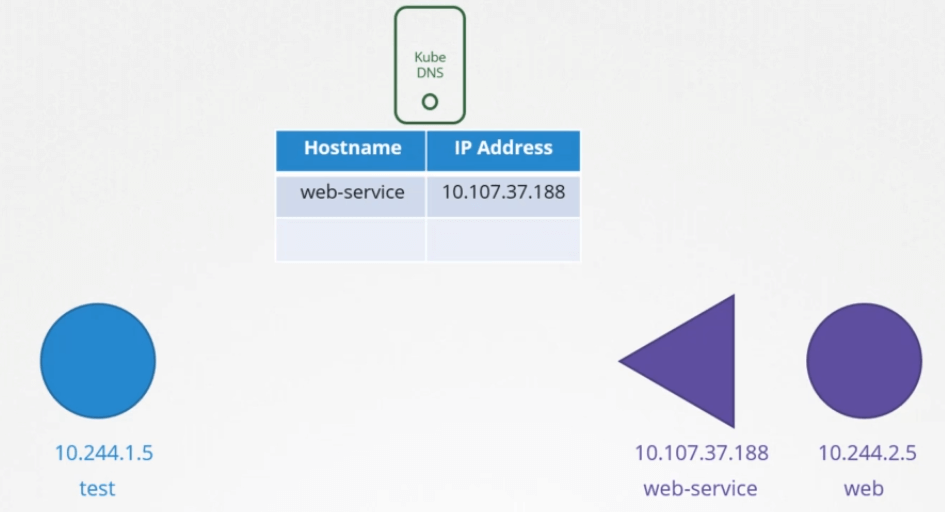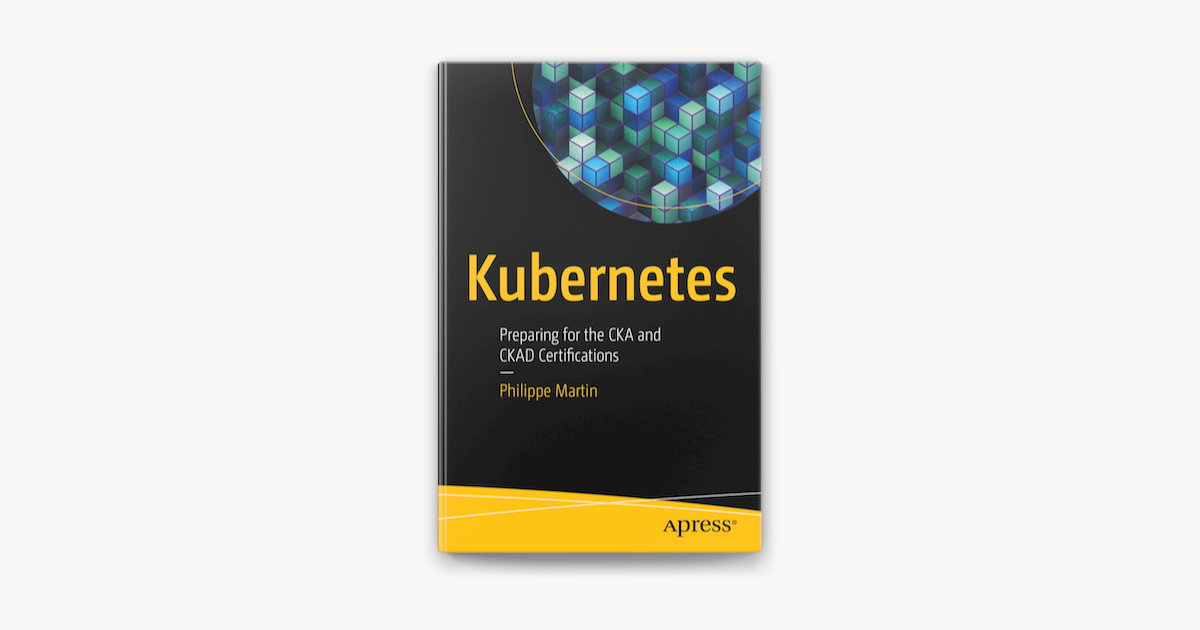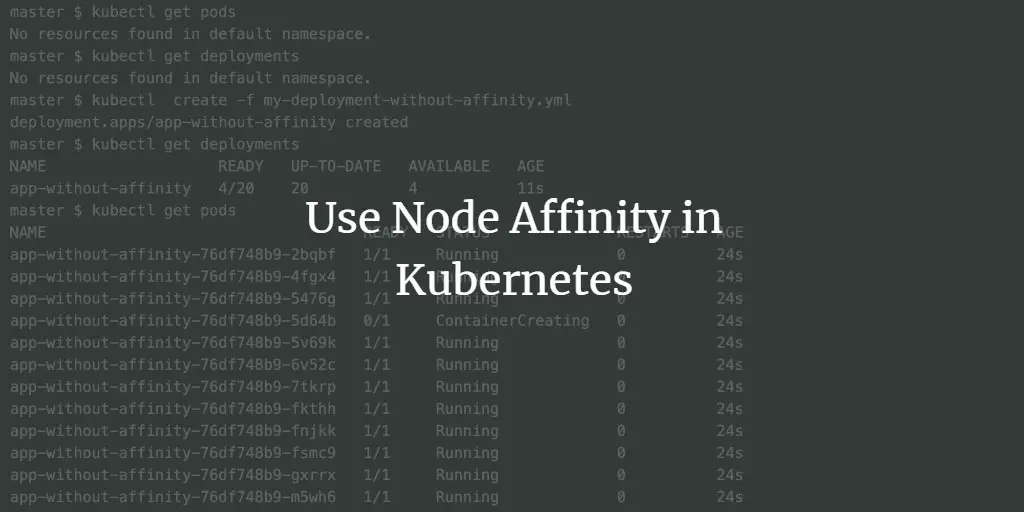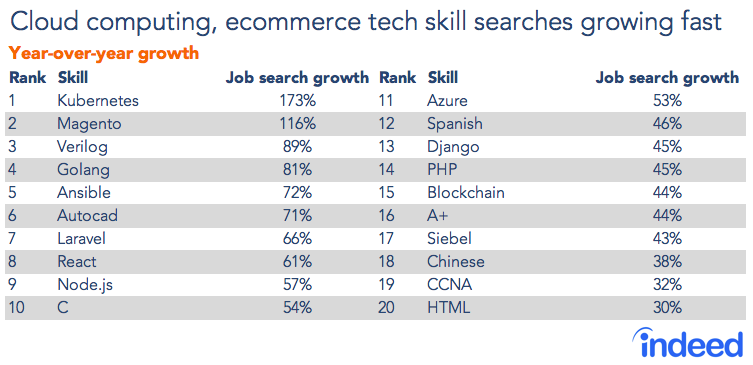40 labels and selectors in kubernetes
docs.microsoft.com › ci-cd-kubernetesMicroservices CI/CD pipeline on Kubernetes - Azure ... A single microservice may involve multiple Kubernetes configuration files. Updating a service can mean touching all of these files to update selectors, labels, and image tags. Helm treats these as a single package called a chart and allows you to easily update the YAML files by using variables. Create And Deploy A MEAN Stack As A Helm Chart Helm has simplified Kubernetes application deployments by providing a simple mechanism to deploy containerized applications in a Kubernetes cluster. It is achieved through Helm Charts, which acts...
Assigning Pods to Nodes | Kubernetes Add labels with the node-restriction.kubernetes.io/ prefix to your nodes, and use those labels in your node selectors . For example, example.com.node-restriction.kubernetes.io/fips=true or example.com.node-restriction.kubernetes.io/pci-dss=true. nodeSelector nodeSelector is the simplest recommended form of node selection constraint.
Labels and selectors in kubernetes
github.com › roboll › helmfileGitHub - roboll/helmfile: Deploy Kubernetes Helm Charts Mar 10, 2022 · Multiple labels can be specified using , as a separator. A release must match all selectors in order to be selected for the final helm command. The selector parameter can be specified multiple times. Each parameter is resolved independently so a release that matches any parameter will be used. Jobs | Kubernetes In addition to required fields for a Pod, a pod template in a Job must specify appropriate labels (see pod selector) and an appropriate restart policy. Only a RestartPolicy equal to Never or OnFailure is allowed. Pod selector The .spec.selector field is optional. In almost all cases you should not specify it. kubelet | Kubernetes Synopsis The kubelet is the primary "node agent" that runs on each node. It can register the node with the apiserver using one of: the hostname; a flag to override the hostname; or specific logic for a cloud provider. The kubelet works in terms of a PodSpec. A PodSpec is a YAML or JSON object that describes a pod. The kubelet takes a set of PodSpecs that are provided through various mechanisms ...
Labels and selectors in kubernetes. Kubernetes Basics Labels Selectors Controllers Services Control Pane API Architecture: Nodes can be virtual or physical hosts Docker has to be installed on all of the nodes Each minion will run ETCD (key pair... Network Policies | Kubernetes FEATURE STATE: Kubernetes 1.22 [stable] The Kubernetes control plane sets an immutable label kubernetes.io/metadata.name on all namespaces, provided that the NamespaceDefaultLabelName feature gate is enabled. The value of the label is the namespace name. How to Autoscale Kubernetes Pods Based on GPU - Private AI Use this guide and follow your OS specific installation instructions. Step 1: Install metrics server Now that we have prerequisites installed and setup, we'll move ahead with installing Kubernetes plugins and tools to set up auto scaling based on GPU metrics. cluster-autoscaler pvc bound to old node, not scaling up. #4923 pod didn't trigger scale-up: 2 node(s) didn't match Pod's node affinity/selector, 1 node(s) had volume node affinity conflict. How to reproduce it (as minimally and precisely as possible): setup AKS cluster; setup a node pool with spot instances (don't think it needs to be spot).
App Connect Dashboard reference - IBM spec.storage.selector. A label query that a specified claim can use to filter for volumes that can be bound to the claim. Optional and applicable only when spec.storage.type is set to persistent-claim. For more information, see Selector and Label selectors in the Kubernetes documentation. spec.storage.size Kubernetes labels, selectors & annotations with examples We have used labels in some of the examples in previous articles, but here I will explain the usage of labels and other related terminologies. Labels. Labels give us another level of categorization, which becomes very helpful in terms of everyday operations and management. Labels are attached to Kubernetes objects and are simple key: value pairs. › docs › latestOverview & Architecture - Open Policy Agent In Kubernetes, Admission Controllers enforce policies on objects during create, update, and delete operations. Admission control is fundamental to policy enforcement in Kubernetes. For example, by deploying OPA as an admission controller you can: Require specific labels on all resources. Require container images come from the corporate image ... kubernetes.io › docs › conceptsDaemonSet | Kubernetes Apr 21, 2022 · A DaemonSet ensures that all (or some) Nodes run a copy of a Pod. As nodes are added to the cluster, Pods are added to them. As nodes are removed from the cluster, those Pods are garbage collected. Deleting a DaemonSet will clean up the Pods it created. Some typical uses of a DaemonSet are: running a cluster storage daemon on every node running a logs collection daemon on every node running a ...
Upgrade Kubernetes Cluster - Cheat sheet # upgrade dev v1.21.12 to v1.22.9: sudo yum install -y kubeadm-1.22.9-0 --disableexcludes=kubernetes # on all machines (also on the worker nodes, because we need it for pre-downloading the images) sudo kubeadm upgrade plan # master sudo kubeadm config images pull # on all machines sudo kubeadm upgrade apply v1.22.9 # on master # check kubectl … Create Persistent Volumes with Storage Classes - VMware In the Tags pane, select Categories and click New. Enter a category name, such as tkg-storage. Use the checkboxes to associate it with Datacenter and the storage objects, Folder and Datastore. Click Create. From the top-level Storage view, select your VMFS volume, and in its Summary pane, click Tags > Assign…. Expose Pod Information to Containers Through Files | Kubernetes The first element specifies that the value of the Pod's metadata.labels field should be stored in a file named labels . The second element specifies that the value of the Pod's annotations field should be stored in a file named annotations. Note: The fields in this example are Pod fields. They are not fields of the Container in the Pod. en.wikipedia.org › wiki › KubernetesKubernetes - Wikipedia Just like labels, field selectors also let one select Kubernetes resources. Unlike labels, the selection is based on the attribute values inherent to the resource being selected, rather than user-defined categorization. metadata.name and metadata.namespace are field selectors that will be present on all Kubernetes objects. Other selectors that ...
Getting started | Kubernetes 12/06/2021 · This section lists the different ways to set up and run Kubernetes. When you install Kubernetes, choose an installation type based on: ease of maintenance, security, control, available resources, and expertise required to operate and manage a cluster.
Kubernetes - IntelliJ IDEs Plugin | Marketplace Completion/navigation/find usages/rename of Kubernetes meta-information labels; Completion/navigation/find usages/rename of ConfigMap/Secret entries; Quick jump to matching selector targets and back; Docker image completion (powered by JetBrains Docker plugin) Enhancements for original Kubernetes model (enums instead of plain strings where ...
kubernetes - Understanding pod labels vs annotations - Stack Overflow Kubernetes labels allow you to identify, select and operate on Kubernetes objects. Annotations are non-identifying metadata and do none of these things. Labels are mostly used to attach with the resources like POD, Replica set, etc. it also get used to route the traffic and routing deployment to service and other.
A visual guide to Kubernetes networking fundamentals Kubernetes Services provide you with a way of accessing a group of Pods, usually defined by using a label selector. This could be applications trying to access other applications within the cluster, or it could allow you to expose an application running in the cluster to the external world.
DRY Kubernetes Parameters (Secrets, ConfigMaps) | CloudTruth Open up a terminal and run the following command, which will push the Kubernetes manifest template up to CloudTruth to be used for Kubernetes Deployments. The command below: Specifies the CloudTruth project name Tells the CloudTruth CLI that you want to create/set a template Specifies which Kubernetes manifest you're using
Kubernetes doesn't recognises local docker image - Stack Overflow Because the kubernetes cluster that i have created has only 2 nodes (master node and worker node) the pod is created in worker node where i have locally created the docker image. More specific if i run. REPOSITORY TAG IMAGE ID CREATED SIZE flaskapp1 latest 4004bc4ea926 34 minutes ago 932MB.
Error 503 when trying to use External Auth via Nginx Controller on ... Find centralized, trusted content and collaborate around the technologies you use most. Learn more
Venil-Reddy-Assignment/kubernetes.tf at main · Venil21/Venil-Reddy ... Contribute to Venil21/Venil-Reddy-Assignment development by creating an account on GitHub.






Post a Comment for "40 labels and selectors in kubernetes"